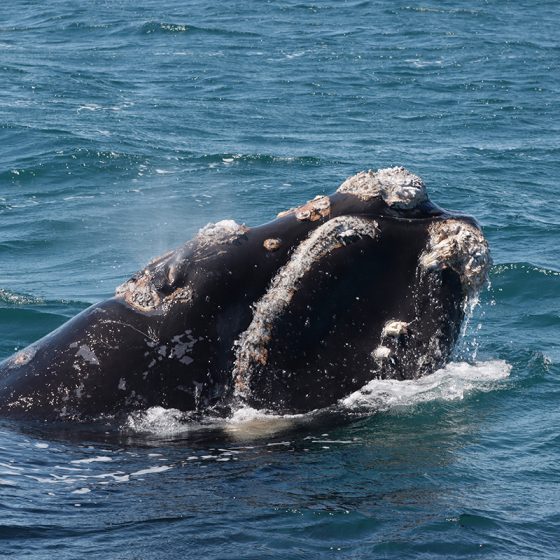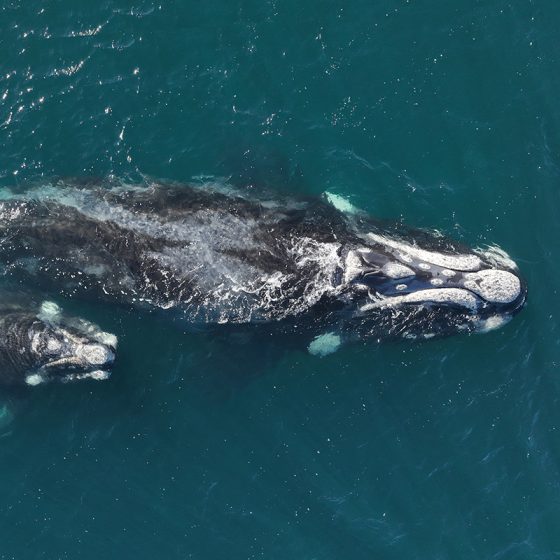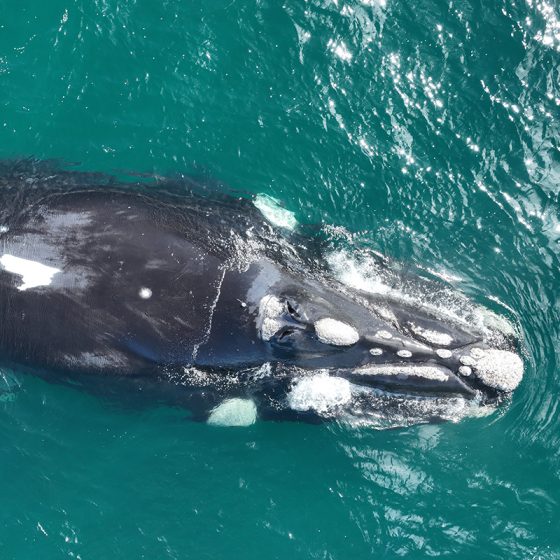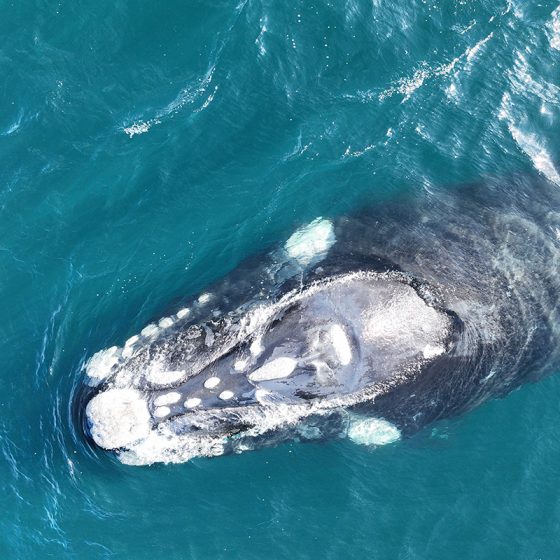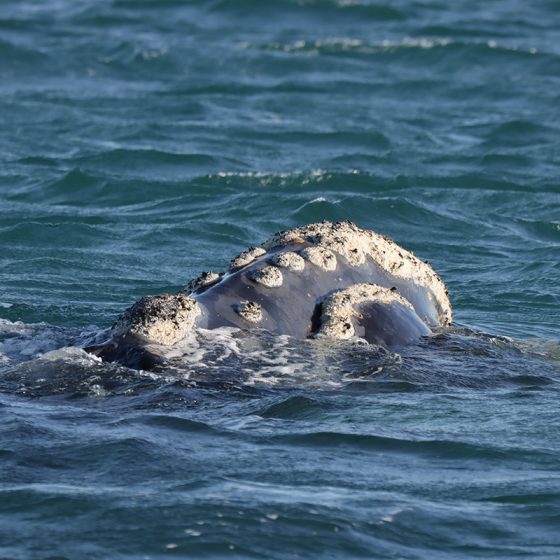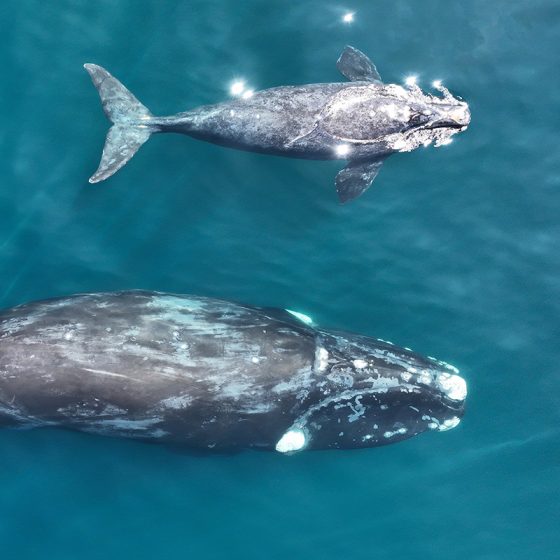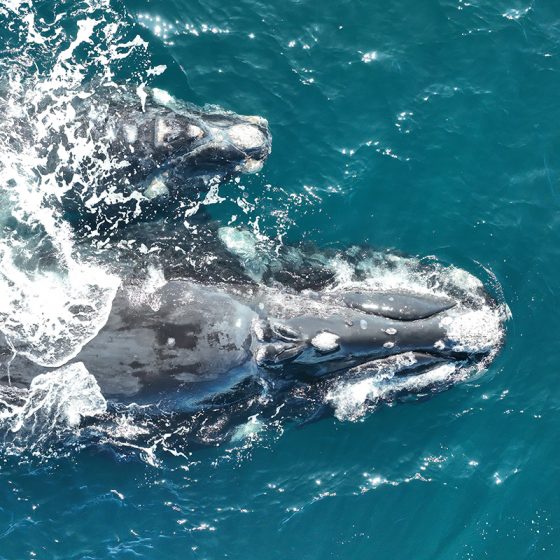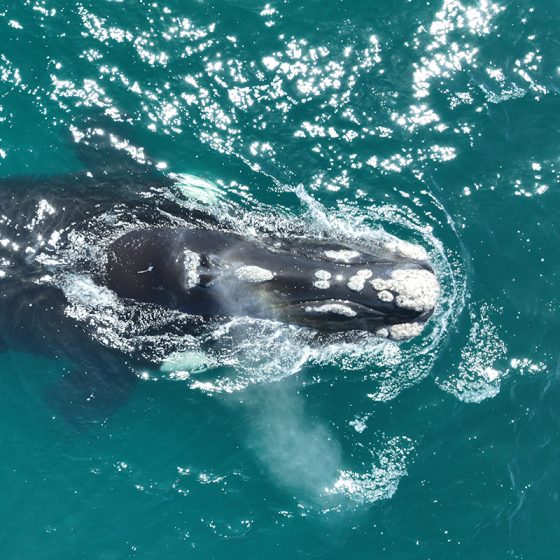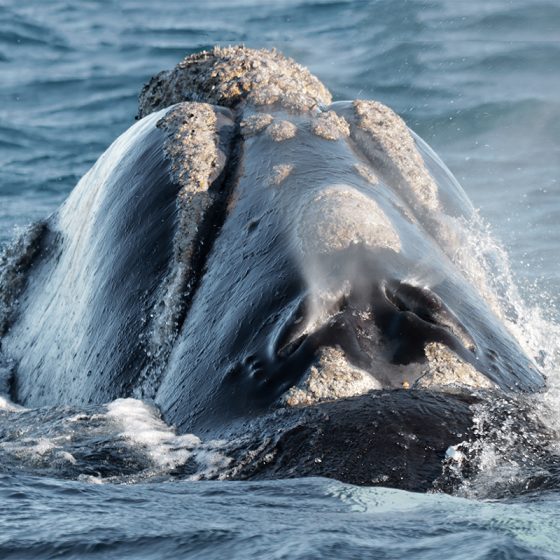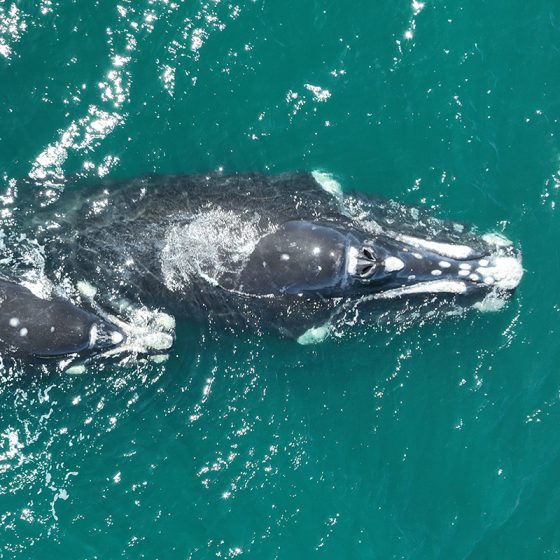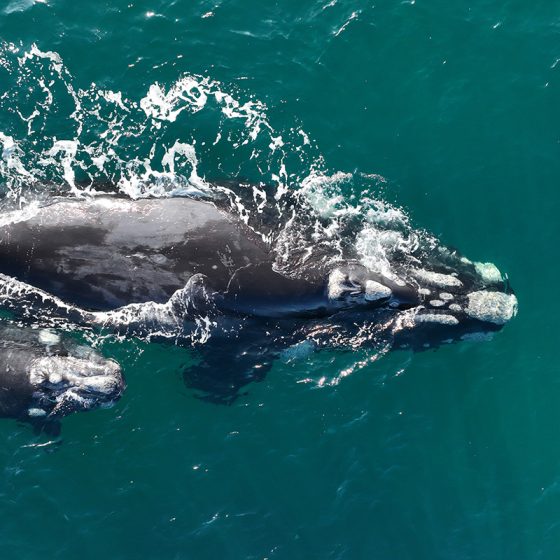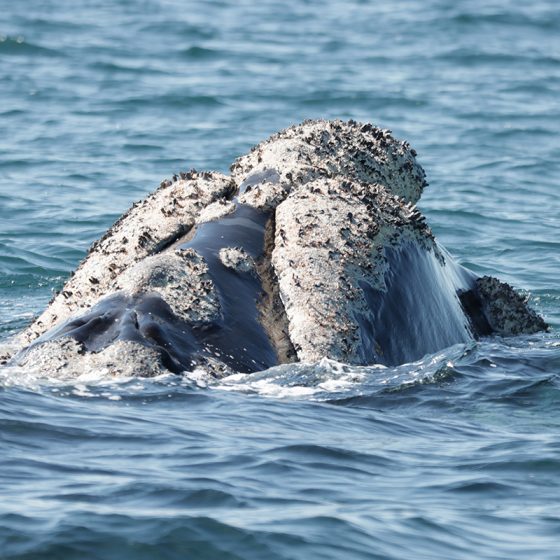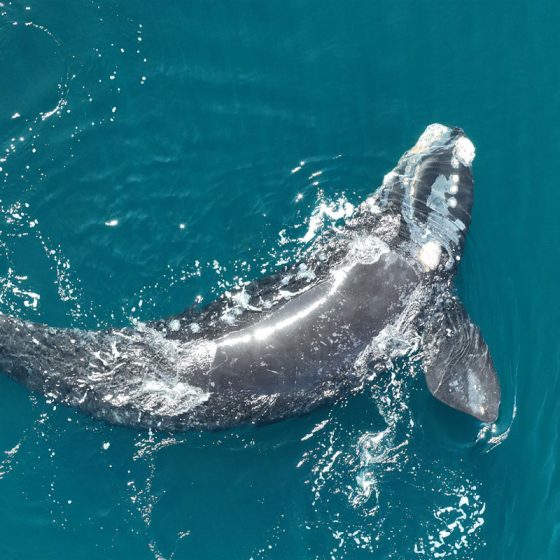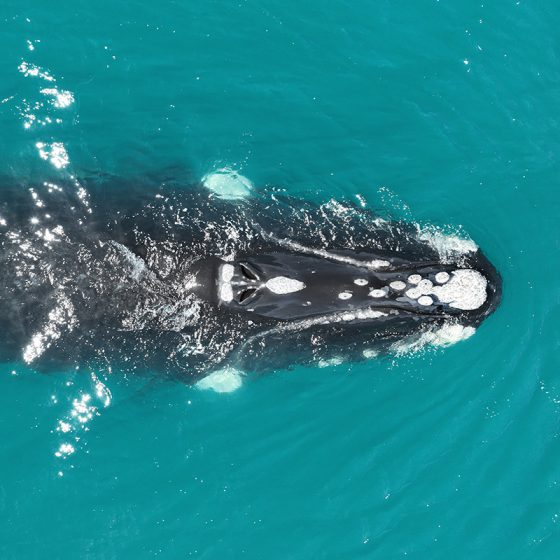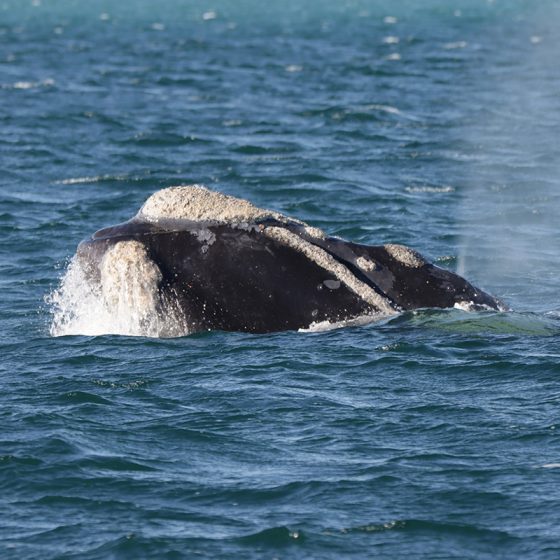Photo: Paula Faiferman
Main Tracking Map
Latest update. Click on each whale to the right to see the individual trackline.
Updated Reports
July 24, 2024
In the past few weeks, the satellite tags on Eos, Persefone and Artemisa ceased transmissions after more than 8 months of activity. By tracking these whales over this long period of time, we were able to obtain valuable information about the migrations, routes traveled, and main feeding areas used by the Valdés whales in the Southwest Atlantic Ocean.
June 24, 2024
Three whales whose transmitters remain active continue providing valuable information about their oceanic migrations. Eos is the whale which traveled the most kilometers in these past weeks, reaching the Southwest Atlantic ocean basin. Persefone and Artemisa remain southeast of the Islas Georgias del Sur (South Georgia), in the area used by Eos for 16 weeks.
June 7, 2024
We have now been tracking Artemisa, the first whale tagged in Peninsula Valdés during the eighth TrackingWhales season, for more than 230 days. Two additional whales, Persefone and Eos, continue with active transmitters in this first week of June. These three whales are near each other in an area between the Islas Georgias del Sur (South Georgia) and the archipelago of the Sandwich del Sur (South Sandwich Islands), north of the Scotia Sea.
May 20, 2024
It is already mid-May, and some whales have returned to Peninsula Valdés, while a few whales tagged in the 2023 season continue with active transmitters: Artemisa, Persefone and Eos. These three whales are close to each other in the sub-antarctic Scotia Sea.
Curiously, also in the Scotia Sea and near the whales from Peninsula Valdes, are three whales tagged in South Africa and one tagged in the Islas Georgias (South Georgia).April 30, 2024
A month from the new breeding season, only three whales from the 2023 season, Artemisa, Persefone and Eos continue transmitting their positions. These three remain close to each other, feeding and exploring the sub-Antarctic seas.
Afrodita’s and Calliope’s trackers ceased transmissions in mid-April, when they were both over the continental shelf, in the area of the Blue Hole.April 9, 2024
Almost six months after being tagged, five whales continue transmitting their positions while on their annual migrations.
Afrodita and Calliope remain over the continental shelf, close to each other (sometimes separated by only 25 kilometers, 16 miles). Both whales converged in the Blue Hole area in the last two weeks of March. The other three whales, Artemisa, Persefone and Eos are still in sub-Antarctic waters.March 5, 2024
This first week of March, 4 months after being tagged, 5 whales continue with active transmitters.
Afrodita and Calliope remain in their previous positions, indicating they continue feeding in the same sectors of the Argentine continental shelf. Artemisa, Persefone and Eos, however, are exploring Antarctic and Sub-antarctic waters.February 20, 2024
Five whales continue transmissions up to the third week of February.
Afrodita and Calliope remain over the continental shelf, near the gulfs San Matías and Nuevo; while Artemisa, Persefone and Eos are in more southerly positions. Persefone is traveling in the north of the Scotia Sea, while Artemisa is traveling southeastwards approaching the Islas Sandwich del Sur (South Sandwich Islands). Eos traveled eastwards along the Scotia Arc and is now 100 kilometers (62 miles) from the Islas Georgias (South Georgia).February 5, 2024
Five whales continue transmitting more than 4 months after deployment of their satellite transmitters. Afrodita and Calliope are over the continental shelf, Afrodita near Golfo San Matías, and Calliope near Golfo Nuevo. The other three whales, Artemisa, Eos and Persefone, are close to each other over the Malvinas (Falkland) plateau, east of the archipelago.
On January 27 we lost contact with Nemesis when she was in the deep ocean basin, at the latitude of Peninsula Valdés.January 19, 2024
Six of the mothers with calves tagged in 2023, still have active transmitters. Artemisa, Nemesis, Eos, Calliope and Persefone are feeding or traveling in the deep ocean basin off Patagonia. Afrodita is the only whale presently over the continental shelf.
We recently lost contact with Gaia’s satellite transmitter, but this may be transient and we may soon again receive information about her migration.January 2, 2024
Since the last update, we have lost the signals from the 3 whales with short duration transmitters (Demeter, Hestia and Pandora). We continue receiving transmissions from the 7 mothers with calves carrying long duration transmitters:
— Four whales (Artemisa, Nemesis, Calliope and Persefone) are currently in the waters of the deep ocean basin, off Patagonia.
— Eos, close to the arc which separates the Southwest Atlantic Ocean from the Scotia Sea, is the whale farthest south.
— Gaia and Afrodita are both over the continental shelf (Afrodita arrived there after traveling extensively over the continental slope, the deep ocean basin, and the Malvinas-Falkland Plateau).December 5, 2023
Ten mothers with calves, out of 16 whales tagged this season, continue transmitting their positions (7 have long duration tags, 3 have short duration tags). The majority of the mothers with calves are already exploring the deep ocean basin off Patagonia, of whom Gaia is the last to have left Golfo Nuevo (and the only whale who still remains close to Peninsula Valdés). Hestia and Demeter both remain over the continental shelf, Hestia having begun her travels to the north, and Demeter about 800 km (497 miles) south of Valdés. The most surprising migratory trip recorded to date is that of Atenea, as she is the first whale of this population to have traveled towards the Pacific Ocean.
Tracked Whales
During the eighth season of the “TrackingWhales” Project, we followed the migration routes of 16 Southern Right Whales equipped with satellite transmitters in Golfo Nuevo. Our goal is to collect information on their movements at their breeding grounds and during their migrations to feeding areas in the southern seas.

